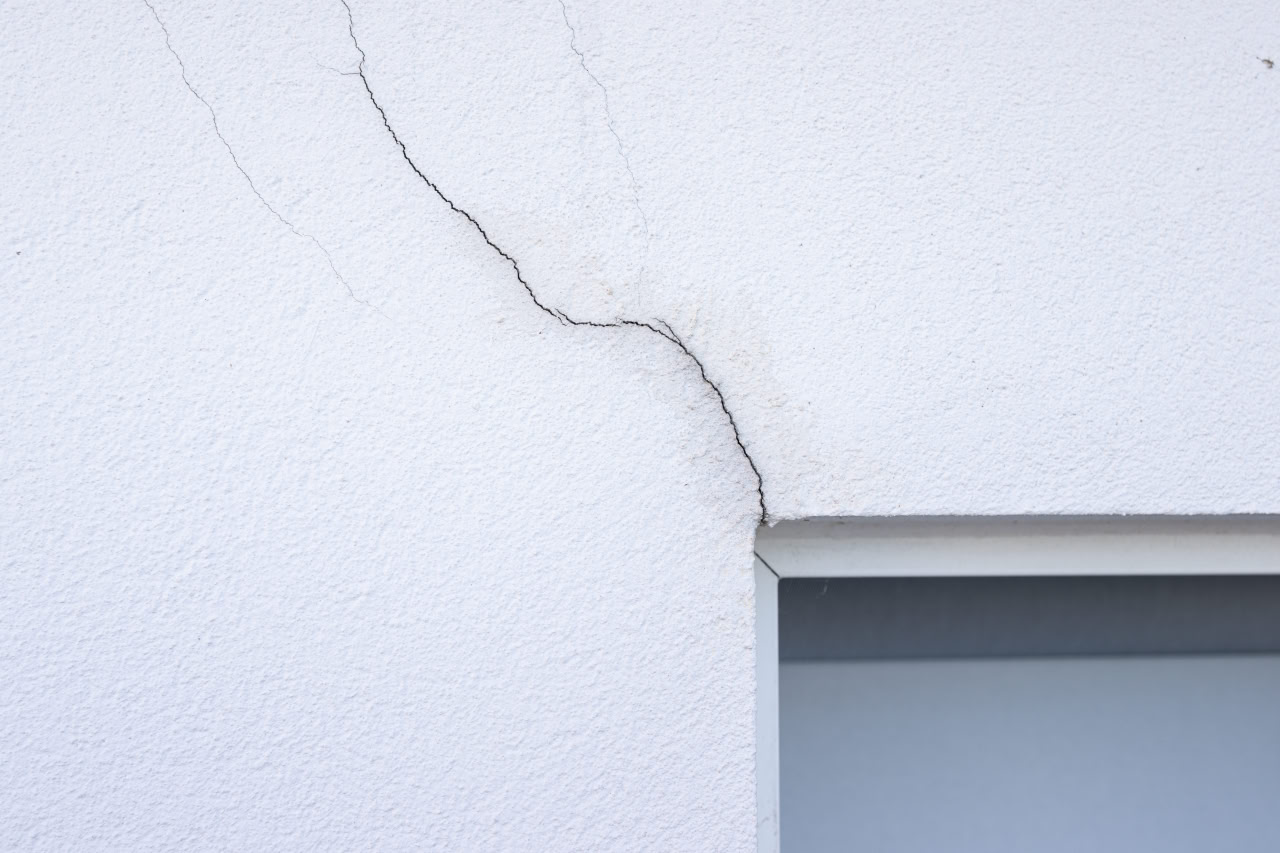As a homeowner, noticing cracks in your foundation can be alarming. Is it just the house settling, or is there something more serious going on? Understanding the different types of foundation cracks and knowing which ones need immediate attention can save you a ton of stress (and money!) in the long run.
Let’s dive into the 10 most common types of foundation cracks, what they mean, and when you should start worrying.
1. Hairline Cracks: The Small Ones You Can’t Ignore Forever
What They Are
Hairline cracks are exactly what they sound like—tiny cracks, usually less than 1/16 of an inch wide. They often form shortly after a home is built and the concrete begins to cure.
Should You Worry?
For the most part, no. Hairline cracks are pretty common and usually don’t indicate a major issue. However, these cracks should still be monitored. If they start to grow wider or deeper, that’s when it’s time to call in an expert.
A Personal Tip:
When we bought our first home, I noticed some hairline cracks in the basement floor. The inspector assured me they were normal and just a result of the house settling. I kept an eye on them, and luckily, they never turned into anything more. But let me tell you, I was glad I knew to check back regularly.
2. Vertical Cracks: Mostly Harmless, but Stay Vigilant
What They Are
Vertical cracks run straight up and down your foundation walls. They’re typically caused by the natural settling of your home after it’s built.
Should You Worry?
Usually, vertical cracks are not a major concern, especially if they’re narrow. But if they start to widen, it could be a sign of something more serious going on with your foundation.
Action to Take
Keep an eye on these cracks. If they widen to more than 1/4 of an inch, it’s time to call a professional.
3. Diagonal Cracks: Warning Signs of Uneven Settling
What They Are
These cracks run at an angle, usually starting from the corners of windows or doors. They’re often caused by uneven settling of your foundation—meaning one side of the house might be sinking faster than the other.
Should You Worry?
Diagonal cracks can be a little more serious than vertical ones. If they’re wider at the top than the bottom, or vice versa, that’s a red flag.
Action to Take
If you spot diagonal cracks, especially wide ones, it’s time to have a foundation specialist take a look. Uneven settling can lead to bigger problems if not addressed early.
4. Horizontal Cracks: The Ones You Should Never Ignore
What They Are
Horizontal cracks are typically found in basement walls and can be a sign of significant structural pressure.
Should You Worry?
Absolutely. Horizontal cracks are usually caused by soil pressure pushing against your foundation walls. In regions with expansive clay soils or poor drainage, this is especially common. Left unchecked, horizontal cracks can lead to total foundation failure.
A Real Wake-Up Call
A friend of mine ignored a growing horizontal crack in her basement wall, thinking it was just cosmetic. It wasn’t. After a heavy rainstorm, the wall actually started bowing inward. She ended up needing a complete foundation repair that could’ve been prevented with early intervention.
Action to Take
If you see horizontal cracks, call a professional immediately. This is not a DIY fix.
5. Stair-Step Cracks: A Sign of Shifting Bricks
What They Are
These cracks follow the mortar lines between bricks or blocks in a stair-step pattern. They’re common in homes with brick exteriors or block foundations.
Should You Worry?
Stair-step cracks are often caused by differential settlement, meaning different parts of your foundation are moving at different rates. If left untreated, these cracks can grow larger and compromise the structural integrity of your home.
Action to Take
If the cracks are small and haven’t changed much over time, they may just need to be monitored. But if they’re widening or you notice more of them, it’s time to call a foundation repair specialist.

6. Settlement Cracks: The Slow, Sneaky Ones
What They Are
Settlement cracks form when the soil beneath your foundation begins to sink or shift, causing the foundation to settle unevenly.
Should You Worry?
Small settlement cracks are common in newer homes as they settle into place. But if these cracks grow wider or deeper, it could indicate more serious issues like soil erosion or poor compaction during construction.
Action to Take
Monitor the cracks, and if they continue to grow or you notice other signs of foundation settling (like doors and windows sticking), it’s time to bring in an expert.
7. Shrinkage Cracks: Harmless but Worth Watching
What They Are
Shrinkage cracks are small, narrow cracks that appear as the concrete cures and dries out after being poured.
Should You Worry?
These are usually harmless and are just a natural part of the curing process. However, if shrinkage cracks start to widen or show signs of movement, they could be turning into something more serious.
Action to Take
No immediate action is necessary, but keep an eye on them for any changes.
8. Foundation Corner Cracks: Small, but Not Insignificant
What They Are
These cracks typically appear at the corners of your foundation and can be vertical or diagonal.
Should You Worry?
Foundation corner cracks are often caused by temperature fluctuations or changes in soil moisture. While they may seem small, if they’re left untreated, they can worsen over time.
Action to Take
Seal these cracks and monitor them closely. If they begin to grow, consult a foundation expert.
9. Basement Floor Cracks: Harbingers of Water Damage?
What They Are
Basement floor cracks form when the concrete slab beneath your home shifts or settles unevenly.
Should You Worry?
Basement floor cracks are often not a structural issue, but they can become a problem if water starts seeping through them. Hydrostatic pressure (water pushing up from the ground) can force water through these cracks, leading to potential water damage.
Action to Take
If you notice water coming through the cracks, it’s time to waterproof your basement or install a drainage system. Even if water isn’t present, large cracks should be inspected by a professional to rule out serious foundation issues.
10. Foundation Slab Cracks: A Major Cause for Concern
What They Are
Large cracks in slab foundations can indicate significant structural issues, often caused by shifting soil, poor construction, or tree roots.
Should You Worry?
Yes. Large slab cracks can compromise the integrity of your home’s foundation and lead to further issues like sinking or shifting.
Action to Take
If you notice large cracks in your slab foundation, call a professional immediately. This type of damage can lead to serious structural problems if not addressed promptly.
Don’t Wait Until It’s Too Late
Foundation cracks are a common occurrence in homes, but not all of them are created equal. While some, like hairline and shrinkage cracks, are relatively harmless, others—especially horizontal or diagonal cracks—can signal major issues that require immediate attention.
If you’re ever unsure about the severity of a foundation crack, it’s always better to be safe than sorry. A quick consultation with a foundation repair specialist could save you from much bigger problems down the road.
Take Action Now
Keep an eye on your foundation, and if you notice any suspicious cracks, don’t hesitate to call in an expert. Regular inspections and maintenance can help you avoid costly repairs and ensure the long-term stability of your home.
Need Solutions?
If you’re dealing with any of these cracks and need a solution, we are here to help! Contact us to resolve all your foundation issues and ensure your home stays safe and structurally sound.



Leave a Reply